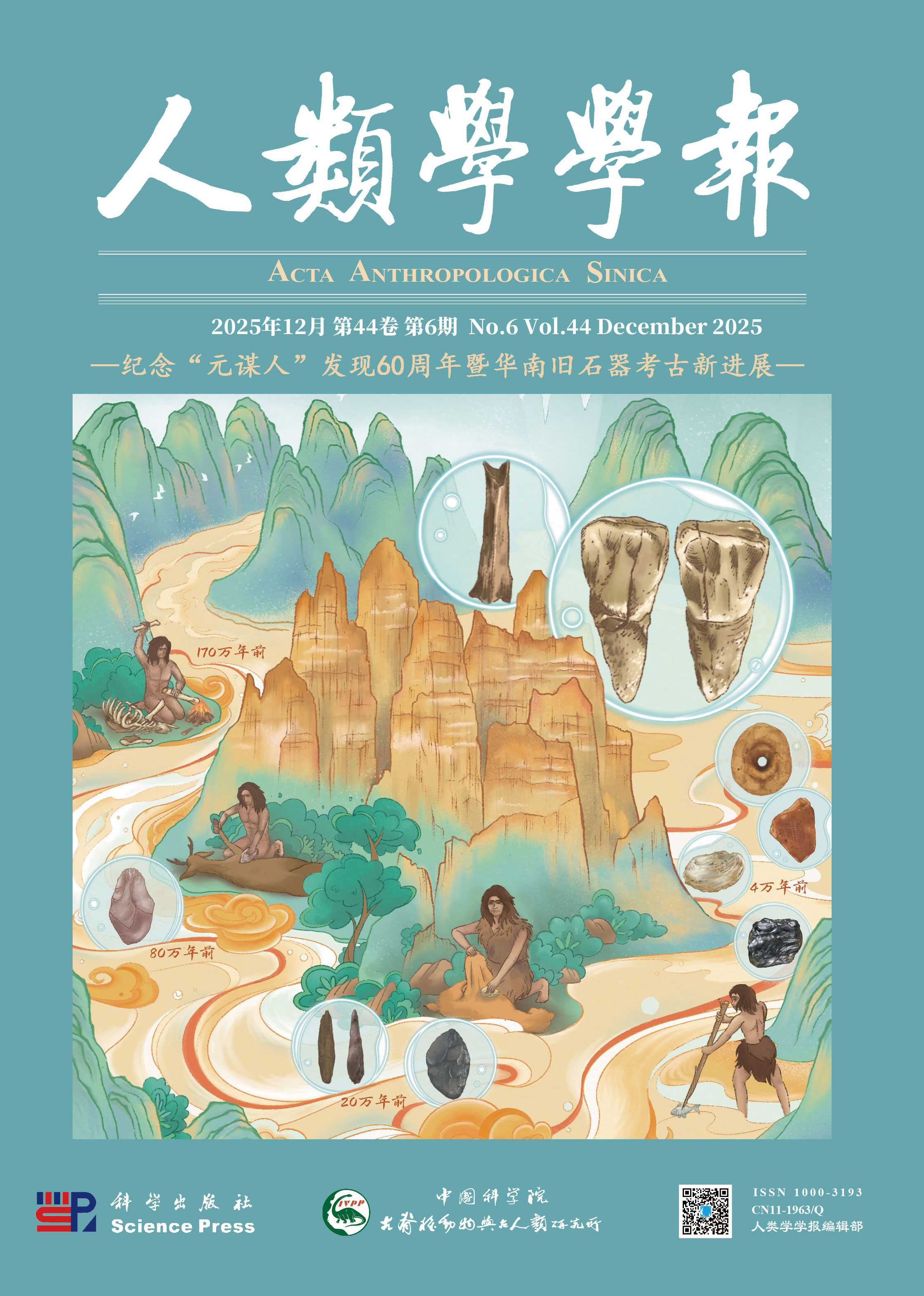The Fengjiapo site (36°14′59.96″N, 110°28′37.15″E; 484.63 m above sea level) is an open-air Paleo-Neolithic site located along the middle Yellow River, about 1500 m west of Fengjiapo village, Jixian County, Shanxi Province, North China. It was salvaged excavated in March 2021. The 3 m2 excavation area features a 0.15 m thick Palaeolithic cultural layer dated 11.5~10.7 kaBP cal, above which is 2.5 m thick Western Zhou Dynasty deposition with pottery shards. Three-dimensional measurements were not recorded during the excavation. A total of 472 Palaeolithic objects, including 342 lithic artifacts(72.46%) and 130 animal bones (27.54%) were densely and irregularly distributed in the very top of the mealy sand layer in Layer 5, but also scattered in layers 4 and 3. The cultural layers featured a “core and flake” industry (recently referred to as “flake and shatter”) along with microblades. Stone raw materials are mainly quartzite(n=210; 61.40%) with some flint (n=86; 25.15%), sandstone (n=33; 9.65%), and quartz (n=13; 3.80%) that were all easily available along the riverside. Lithics consisted cobbles (n=1; 0.29%), cores (n=5; 1.46%), flakes (n=108; 31.58%), chunks (n=127; 37.13%), chips (n=84; 24.56%), microblades (n=4; 1.17%), and tools (n=13; 3.80%), such as a chopping tool, point, end-scraper, drilling tool, and grinding stone, and eight scrapers. Assemblages were dominated by flakes, chunks and chips produced by hard or soft hammer percussion, also including microblade technology, with no evidence for anvil (bipolar) percussion. Several flakes and chunks were used with clear microwear observed along used edges. Usewear analyses showed main functions connected with cutting, scraping and grinding, with further studies planned. Debitage indicated in situ human activities of tool making and using and with many chips, which indicated little transport.
All animal bones were broken into pieces, with nearly half (57/130) affected by fire, turning black or gray. Two large mammal genera, Cervidae and Bovidae, were identified based on diagnostic teeth. Most bones were covered in calcareous concretion, but parallel and superimposed cutting marks were observed on the surface of four bone fragments. Two bone samples collected from Layer 5 and one from Layer 3 were dated by Accelerator Mass Spectrometry (AMS) at Peking University with radiocarbon dates ca. 11.5~10.7 kaBP cal, just at the beginning of the Holocene when it warmed rapidly.
The Fengjiapo site is a newly found open air site along the Middle Yellow River during the Palaeo-Neolithc transitional stage. The high amount of debitage, expedient tools, used pieces, and less well-retouched tools indicate it was a temporary camp for tool making, animal cooking, and grinding activities. The clear depositional sequence and dates make the site comparable to those along the Middle Yellow River, and ongoing environmental analysis will help expand our knowledge of human activities from the Palaeolithic to Neolithic.









